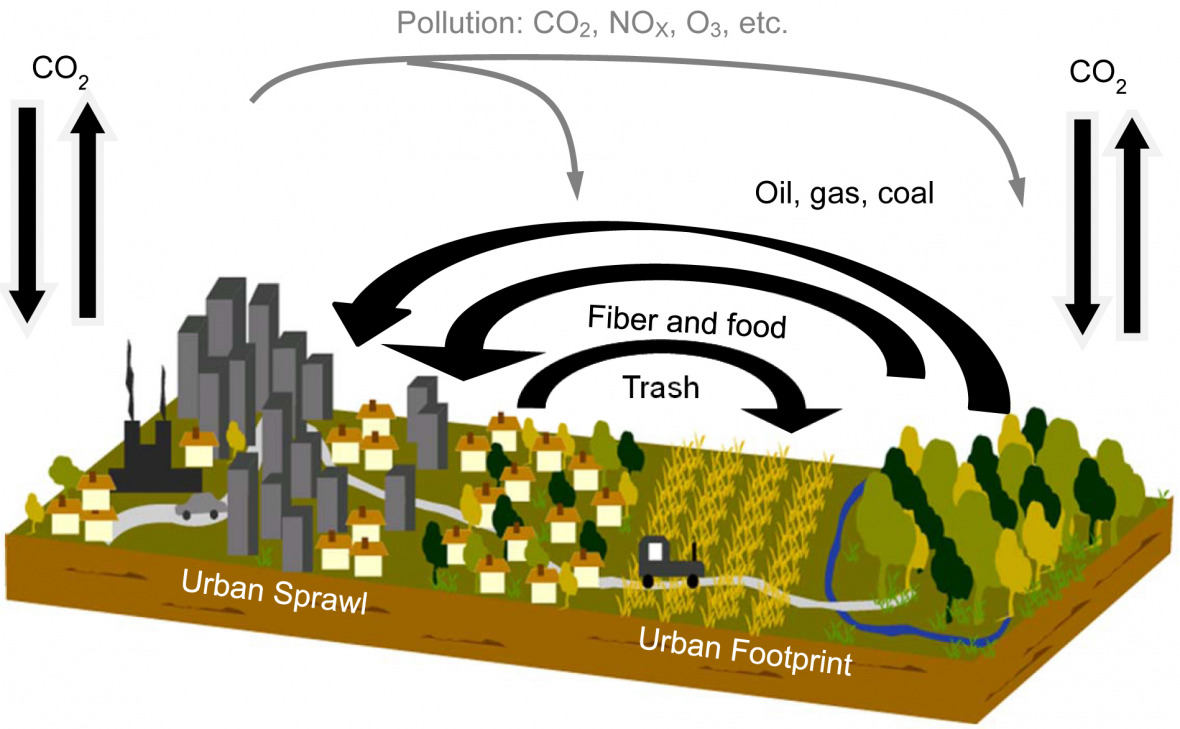The Global Carbon Cycle: New Study Highlights Impact of Urbanisation
26.05.2016

Cities are increasingly important actors within the global carbon cycle according to a study recently published in the journal Frontiers in Ecology and Evolution. “The role of urbanisation within the carbon cycle extends well beyond its contribution to carbon dioxide emissions through fossil fuel combustion and deforestation. This aspect has been neglected in research to date," explains Galina Churkina, the author of the study and a Senior Fellow at the IASS. The growth of urban areas has also resulted in the creation of new carbon sinks. Churkina estimates that buildings in urban areas currently store around one per cent of the carbon taken up by vegetation worldwide. Similarly, urban landfills account for approximately one per cent of global carbon stored in soils. Further research on these carbon sinks is needed to ensure their proper management. Adopting climate-friendly construction materials and approaches to urban development could reduce the carbon footprints of high-density areas and contribute to climate protection.

New impetus for sustainable urban development
As one of the fundamental building blocks of life, carbon cycles through the environment. Carbon is emitted into the atmosphere, captured, stored, and then emitted again. Within the course of this cycle, carbon compounds are exchanged between different components of the Earth System: from carbon dioxide in the atmosphere to carbon compounds in living organisms to hydrocarbons in oils and gases. Human activities such as the burning of fossil fuels have significant implications for the carbon cycle. Greater insight into these processes might enable us to better understand human interventions in the climate and to develop effective measures against global warming. Efforts towards sustainable urban development also benefit from these new research findings on the uptake of carbon in urban spaces. In the future, buildings and parks could be designed to take up additional carbon from the atmosphere and provide long-term sinks.
Planning for a climate-friendly urban footprint
“Nearly a quarter of global carbon dioxide uptake can be ascribed to cities today. This share of global uptake will increase as urban populations grow," explains Churkina. While just 10 per cent of the world's population lived in urban areas at the turn of the twentieth century, the share of urban populations had climbed to 30 per cent by the 1950s. At the turn of the millennium, there were more people living in cities than in rural areas for the first time in human history. Experts anticipate that the share of urban dwellers will rise to around 75 per cent of global population by 2030. According to Churkina, future efforts to increase the role of urban areas in global carbon sequestration should focus on the development of compact residential areas and the use of materials such as timber in construction. More extensive plantings of vegetation and the preservation of unsealed urban areas are also recommended. The adoption of climate-friendly waste management strategies and the location of new cities will also play a decisive role in addressing future challenges, as populations make less use of heating and air conditioning in milder regions.